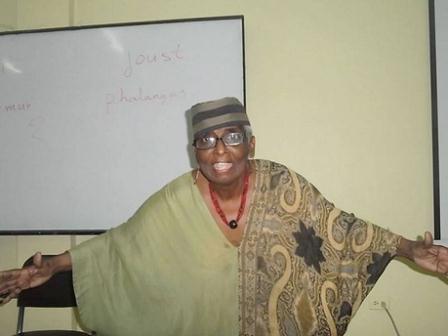(Jamaica Gleaner) My objective with this column is to both critique and celebrate the island’s performing arts, usually thought of as being dance, drama and music. In Kingston, the acknowledged culture capital of the English-speaking Caribbean, there is not a weekend when one or more of those art forms is not available to audiences.
But there is another performance art which may be even more important to Jamaicans, especially our children, than the three mentioned, but which I and too many other Corporate Area residents have access to only infrequently. I refer to storytelling.
Happily, over the weekend I was privileged to see and hear one of our best storytellers, Dr Jean Small, at work. She asserts that storytelling “is our principal art form”, and as a university lecturer with more than 60 years’ acclaimed experience in the performing arts, she speaks with authority.

Originally from Guyana, she has made her name in the theatre – live as well as puppet theatre – as actress, playwright, director and producer. But her most recent public performance was on Saturday last as a storyteller.
This was at the Jamaica Theological Seminary, where she conducted a storytelling workshop organised by the Dynamic Speakers Toastmasters Club. Dr Small holds the designation Distinguished Toastmaster, the highest one possible in the international club.
Storytelling is important to her. This was evident to her audience from the passion with which she spoke and to me privately later, when she said “Storytelling is the legacy of our ancestors, whose origin was an oral culture. It is our principal art form. Anything told or taught in the form of a story is memorable.”
TRUE TO HER WORD
Stating further that “teachers and parents should use storytelling as a teaching tool and learning would become more enjoyable”, Dr Small practises what she preaches. That’s why the three-part workshop, which aimed in part to instruct Sunday school teachers on how to communicate religious messages to their students, began with stories.
Initially seated at the back of the room, Dr Small started chanting in French, with an African cadence, as she slowly made her way to the front to face her audience. There, she declared: “I am here to tell you a truth today.”
She then launched into her tale about an African cattle farmer who loses his sky-dwelling wife because he breaks his promise to her. One of the many messages that came out of the story during the post-narration discussion was “people don’t believe what they can’t see”.
Putting on a powerful dramatic performance, Dr Small narrated two more stories. One was the well-known Anancy story about that Jamaican spider man capturing Snake by tricking the reptile into being tied to a bamboo. The last one was about two eagles raised as chickens, with differing results. One remained in the chicken yard thinking it was a chicken; the other discovered it was an eagle and flew away with another of its kind.
DISCUSSION TIME
After the stories came discussion time, the theme of which was storytelling techniques. These included miming, using a variety of vocal tones, getting audience participation and mixing narration with singing.
Using those techniques and others, Dr Small showed herself to be an excellent communicator. It is a happy conclusion for someone who admitted she was concerned “for a long time” that she could not communicate with audiences as well as Jamaican performing and poetic icon Louise Bennett-Coverley.
Commenting on her overcoming the concern, Dr Small said “once I found my own voice I discovered that I could communicate just as effectively. Storytelling gave me more confidence in myself as a communicator. This I developed as a Toastmaster.”
Dr Small said she also used storytelling in her work theatre. She added, “my one-woman play A Black Woman’s Tale is, in fact, storytelling”.
The final segment of Dr Small’s workshop was a PowerPoint presentation on numerous aspects of the art form.
They included Categories of Stories (for example, myths, legends and fables), the Attributes of a Good Storyteller (she should be able to sing, dance and act, etc), Structure of a Folk Tale (the formulaic opening and closing, for example), and Characteristics of Storytelling.
Brawta for the workshop came in the telling of a story by Norma, a Maroon from the Moore Town area of Portland. With much dancing and gesticulation, she told a tale which she said had been passed down to her by her grandmother, also a Maroon.
She said that there are many other stories to be heard from the older folk in the Maroon community in Portland. One hopes researchers have gone to the area and recorded and published those stories.
For we all know the saying, “when an old person dies, a library is lost”.








